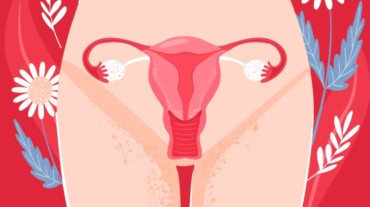
Cervical cancer develops when there is an unwanted growth of cells in the lower part of the uterus linked to the vagina. It is the second most prominent cancer among women between 15-44 years of age in India. Globally, there are ongoing efforts to raise awareness about cervical cancer and its prevention to reduce the incidence of this disease. Early diagnosis can reduce the mortality rate, so let us learn more about this type of cancer and what puts you at risk of developing it.
Cervical cancer is associated with Human Papillomavirus (HPV) infection as the HPV virus is found in about 99 percent of cervical cancers. The HPV virus is considered to be the most important risk factor for cervical cancer as certain types of the HPV virus such as HPV-16 and HPV-18 can transform normal cervical cells into abnormal ones, which eventually develop into cervical cancer. A matter of concern is the finding that about 5 percent of women harbour cervical HPV-16/18 infection. It is, therefore, important to know the lifestyle factors that play a significant role behind why does cervical cancer happen.

The following are the key lifestyle factors that increase the risk of cervical cancer in women. Addressing these can help to reduce the risk and bring down the morbidity and mortality associated with the disease:
Starting sex at an early age and having multiple sexual partners may increase the risk of cervical cancer. It may increase the likelihood of exposure to HPV and other sexually transmitted infections.
Smoking has been linked to an increased risk of cervical cancer. Smoking increases the chance of developing precancerous lesions of the cervix, known as dysplasia. This, in turn, increases the chance of developing cervical cancer. It is surmised that the toxic chemicals in tobacco smoke damages the DNA in cervical cells and increases the likelihood of cancerous growth.
A weakened immune system increases the risk of HPV infection and cervical cancer. So, it is better to make sure you are eating the right foods and getting enough exercise to boost your immunity.
Also read: Can poor hygiene down there give you cervical cancer? Here’s the truth

Too much alcohol can also increase your risk of cervical cancer. Alcohol can weaken the immune system, making it more difficult for the body to fight infections and other health problems. Usually, a healthy woman’s immune system may fight the infection and prevent it from progressing and causing harm to the cells of the cervix. However, the infection can become chronic if the immunity is impacted, increasing the risk of damaging the cervical cells.
A diet high in antioxidants, carotenoids, flavonoids, and folate can help women to fight off HPV infections and also prevent the change of cervical cells into cancerous lesions. Vitamins A, C, D and E, and carotenoids are also a great way to deal with it. All these are found in fruits and vegetables. Hence, while a diet rich in fruits and vegetables is advised, one should avoid excessive consumption of red meat and processed meats.
Being overweight or obese may increase the risk of cervical cancer. Excess body fat can lead to chronic inflammation, which can damage cells and increase the risk of cancer.
Select Topics of your interest and let us customize your feed.
PERSONALISE NOW
Lack of physical activity has also been linked to an increased risk of cervical cancer. Exercise can help maintain a healthy weight and reduce inflammation, which may help lower the risk of this disease. Even 30 minutes of exercise each week can significantly reduce a woman’s risk of developing cervical cancer.
It has been found that the long-term use of certain types of contraceptives, such as oral contraceptives may increase the risk of cervical cancer. Around 5 years of using a contraceptive pills can increase the risk by 5 percent, up to 9 years can increase the risk by 60 percent and double the risk if you use it for 10 years or more, suggests research. However, the risk reduces after stopping the pill.
It is important to note that cervical cancer is a preventable disease. After the initial infection with HPV, it requires more than 15-20 years to develop cervical cancer, which is a very large window of opportunity to identify precancerous lesions and treat them. There is a very effective screening test available called a PAP smear and HPV DNA testing, which helps identify and treat precancerous lesions.
Prevention of cervical cancer can be achieved by a combination of HPV vaccination, regular screening, and treatment of precancerous lesions. Also, there is a need for early diagnosis and treatment as the survival rates are far superior in the early stage.

However, making healthy lifestyle choices can help reduce the risk of this disease and improve overall health. Barriers such as access to oncology specialists can be addressed by a robust primary care system for initial identification and diagnosis followed by a full-time model for doctors. It will help promote a multidisciplinary team approach to care and treatment.
So, let us begin today and pledge to quit smoking, drink alcohol in moderation, eat a healthy diet and stay physically active.